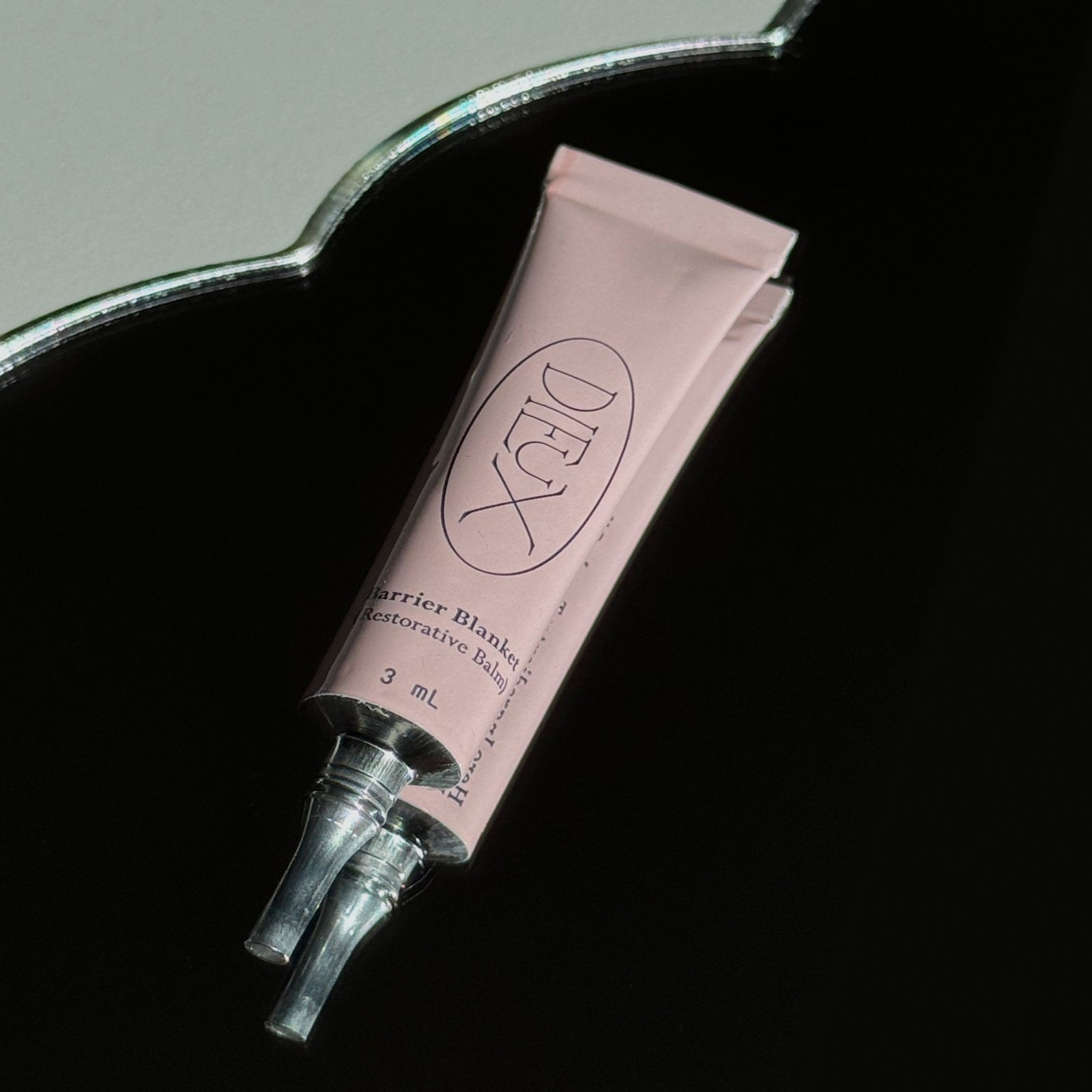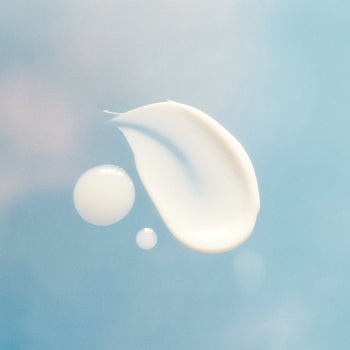
The One Thing That Can Save Dry Skin: An Occlusive.
Slugging started on reddit…why does it work so well?
Slugging (slathering your face with an occlusive at the end of your routine) went viral in 2020 for a simple reason: trapping water in your skin WORKS. It’s a practice many people have been doing for, well, centuries. The first recorded use of petrolatum (occlusive example no. 1) in the United States was by indigenous tribes in Pennsylvania.
Why? Occlusives – rich ingredients that essentially waterproof the skin – are doing something critical: reducing trans-epidermal water loss (TEWL), aka the rate at which water is lost in the skin. Think of occlusives like bouncers for your barrier, keeping moisture in, and irritants out.
According to Becca, a cosmetic chemist on our product team, “Most of us don’t know our unique TEWL rates - you might have a vague idea depending on if your skin tends to be dry, but protecting it overall is important. And so many things affect it, like the clothing you wear, your everyday routine. You’ll lose more water if you went swimming or if you sweat a lot – your body temperature affects your TEWL.”

So reminder, why is dry skin so bad? Aside from the obvious discomfort of it, dry skin can actually lead to all sorts of concerns.
- With a dry, damaged barrier, irritants can get into the skin more easily.
- Dry, cracked skin allows water to escapes more quickly (a dry dry, lose lose).
- From this combination, skin becomes more inflamed and irritated.
Putting an occlusive on top of skin (preferably after cleansing and moisturizing it) stops this cycle.
Some common occlusives that combat dryness:
Petrolatum: the original. It has a bad rep because it’s a fossil fuel derivative – but the truth is, all those “plant-based” slugging products are also using petroleum products. From packaging (fossil fuels) to the processing of plants (fossil fuels) to the nitrogen used in industrial agricultural fertilizer (fossil fuels). While we agree there needs to be a reduction in society’s reliance on the fossil fuel industry, we think it’s getting close to greenwashing to imply plants don’t use the ingredient you’re replacing. Take a look at our thoughts about it, here.
We love plants! They’re just also fossil fuel derived for the most part. Next up.. Lanolin.
Lanolin: Latin for “wool oil”, this ingredient is another original when it comes to occlusives. During the shearing process of sheep, as the wool is washed, wool wax is separated from the fibers. This “sheep yolk” is a wax secreted by the sebaceous glands of wool-bearing animals. The use of wool grease has been around for thousands of years with both ancient Egyptians and Greeks using it on their faces for its ability to moisturize, beautify and heal the skin. While lanolin is excellent as an occlusive, it can be an irritant so always patch test!
“Lanolin is my favorite. I use hand cream with it and it really helps my cracked winter knuckles. It creates a hydrophobic film - you can literally see the droplets of water beading off after the product is applied! I swear by Lanolin, and a lot of vegan alternatives exist for it now, like phytosteryl macadamiate found in our Instant Angel formulation!” -Becca
Beeswax: This ingredient has spanned many cultures and civilizations when it comes to skincare. From techniques that are still used in West Africa to a recorded nail polish recipe from 3,000 B.C.E. ancient China, the relationship between bees and humans has always been intertwined.
The difference between beeswax and lanolin & petrolatum is the latter are both recognized by the FDA as “skin protectants” allowing them to make drug claims.
Wait, you can make drug claims with petrolatum?
YES! Along with other ingredients like glycerin, dimethicone and more. Per the FDA, “Skin protectant drug product: A drug product that temporarily protects injured or exposed skin or mucous membrane surfaces from harmful or annoying stimuli, and may help provide relief to such surfaces.”
Here are a few examples:
Cocoa butter, at 50 - 100%
Dimethicone, at 1 - 30%
Glycerin, at 20 - 45%
Lanolin, at 12.5 - 50 %
Petrolatum, at 30 - 100%
Citation for all drugs: (see here)
Keep in mind occlusives aren’t just used for slugging. Becca noted, “I consider a moisturizer well-balanced and well-formulated when it includes the big three ingredient categories: occlusives, emollients, and humectant. The perfect moisturizer needs that occlusive element or else you’re reducing the benefit of the rest of the formula, because you’re not addressing TEWL!”
“Occlusives can also be found in sunscreens, as they can sometimes help with film formation and water resistance.”

What about Barrier Blanket?
Barrier Blanket is the next generation of slugging. Where we are relying on the classics like petrolatum and plants (hi bisabolol, a delightful ingredient from chamomile to soothe the skin), we’re also looking to the future with torula oil, a biotech-derived ingredient
Torula oil isn’t derived from plants or petrolatum. It’s derived from biology, little yeasts that are fed food waste to create bacteria whose oils then make up this incredible emollient that is clinically shown to fill in the cracks of skin to promote a healthier barrier.
Just remember, slugging can be problematic for oilier skin types. For those with dry skin, apply your moisturizer (like Instant Angel) and a pea-sized amount of Barrier Blanket on top (or more as you see fit).
And always remember, You’re Dieux-ing great!







